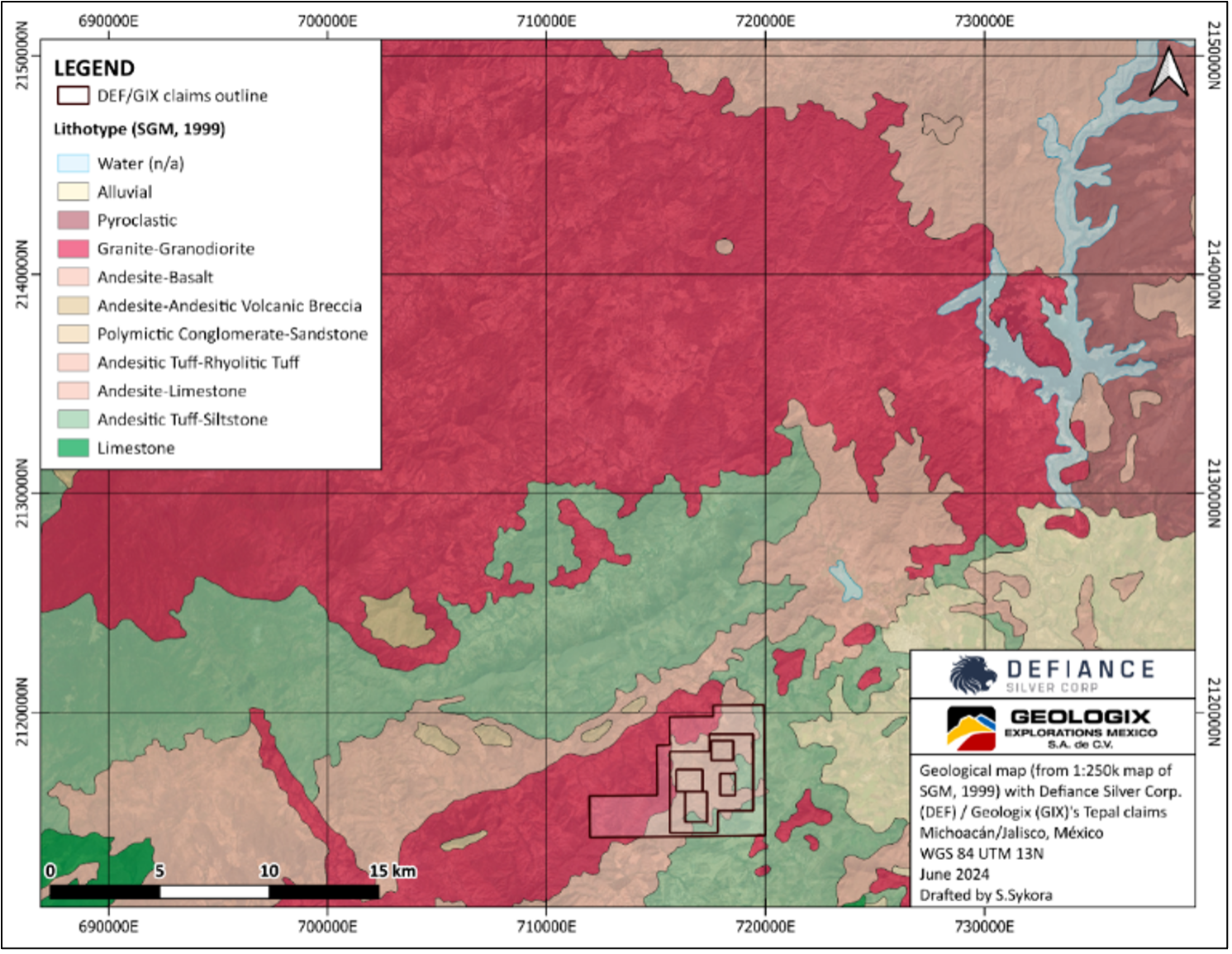Tepal project

Figure 1: Regional Geology Map
Typically, within the deposits, east-northeast strikes are associated with wider faults and shear zones and appear to be later and longer lived than the north-northwest-striking faults. The north-northwest-striking faults appear to have had a control on the elongation of the plan-projected mineralization of the North Zone and South Zone. The northeast-striking faults likewise had a role in the elongation of the plan-projected mineralization of Tizate.

Figure 2: Property Geology Map
Mineralization on the property consists of zones of stockwork quartz veinlets, sulphide veinlets and disseminated sulphide mineralization that are hosted within intrusive rocks, volcanic rocks and breccias. These sulphide-bearing zones contain significant concentrations of copper and gold and, to a lesser extent, molybdenum and silver. The mineralization are hosted in three distinct deposits: the North Zone and South Zone with relatively high-grade copper and gold, and Tizate with relatively lower-grade copper and gold, but higher-grade molybdenum.
Morphologically, two of the zones, the North Zone and Tizate, are crudely tabular with shallow to moderate dips. Both have rough dimensions of approximately 1,100 by 600 m and thicknesses of up to 200 m. The South Zone has a smaller footprint, 600 by 500 m, but a greater vertical extent of up to 400 m and dipping steeply to the south.
There is an oxide horizon and a narrow transition layer present in all deposits on the Tepal property above the sulphide mineralization. The depth of oxidation ranges from 20 to 40 m on the hilltops and 0 to 20 m in the drainages. The transition zone may be up to 15 m thick; however, it is usually significantly less than this and, in some cases, is absent altogether. The transition is identified by the overlapping presence of iron oxides and sulphide mineralization.
Primary sulphide mineralization consists dominantly of chalcopyrite and pyrite with locally significant bornite and molybdenite. The highest consistent grades of copper and gold mineralization are associated with low pyrite: chalcopyrite ratios and increasing bornite. Local areas of very high-grade gold are associated with thicker veins that cross-cut Tizate, and contain pyrrhotite, sphalerite, galena, silver sulphides, as well as chalcopyrite and pyrite.
Micron-sized native gold is usually associated with the chalcopyrite either as grains attached to the surface or fracture fillings within copper sulphides (Duesing, 1973), although free grains can also occur. Copper mineralization typically occurs as disseminated chalcopyrite and bornite within veinlets and disseminated within altered porphyritic groundmass (Shonk, 1994). Molybdenum mineralization occurs as molybdenite.
Several different generations of veinlets are associated with copper-gold mineralization, and future work will refine this paragenesis. The earlier veinlet group of granular dark grey quartz with fine-grained sulphides, as well as granular subhedral to euhedral quartz in the groundmass with fine-grained disseminated sulphides, is the assemblage most associated with copper and gold mineralization.